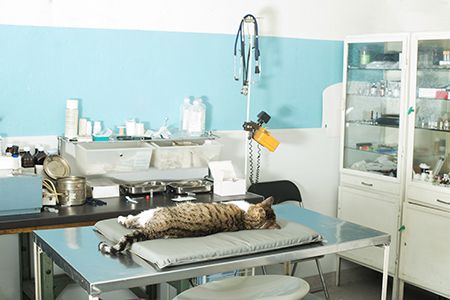Triage STAT! Emergency veterinarians needed now
The veterinary associate shortage hasnt left the emergency medicine sector unscathed. Heres a look at why the number of emergency/critical care job openings is outpacing the number of veterinarian and veterinary technician applicants and whats being done to fill these open positions.

With the national crisis at hand, pet owners are left with fewer options for critical care when it comes to their pet. (Deyan Georgiev/stock.adobe.com)
“In the middle of difficulty lies opportunity.” - Albert Einstein
Staffing and retention at small animal emergency and critical care veterinary practices has reached a crisis level in the United States. Recently, the Veterinary Emergency and Critical Care Society (VECCS) and the American College of Veterinary Emergency and Critical Care (ACVECC) created a task force to determine the factors that influence employees to enter and remain in the field of emergency and critical care. At this time, the problem appears to be multifactorial and complex.
The number of open emergency and critical care positions for qualified veterinarians and technicians is at an all-time high, with more than 150 current listings for emergency clinicians on the VECCS job board and more than 950 on the AVMA Career Center. Many of these positions remain unfilled due to lack of applicants.
Veterinary practices nationwide are in a heated race to outdo one other by offering generous signing bonuses, competitive salaries and excellent benefits packages to attract applicants. Some practices offer staff incentives and bonuses to encourage friends and colleagues to apply for open positions in a hospital. Despite these efforts, more than half of positions remain open for a year or more, with continual staff turnover in the meantime.
Not just emergency
Read about the current veterinary associate shortage and get some tips to deal with it in this dvm360 Spotlight Series.
Why the shortage?
The increasing focus among veterinary professionals, particularly younger generations, on work-life balance has meant that fewer general practitioners are willing to take on emergency cases. Some general practitioners prefer to refer emergency cases elsewhere rather than having to work after hours, disrupt a full schedule of appointments or make their scheduled clients wait. At the same time, the number of emergency facilities opening in recent years has skyrocketed.
The fast-paced nature of emergency practice and the chance to see a variety of critical patients are what draw many veterinary professionals to the emergency and critical care arena. Yet these same things can also contribute to burnout. Working overnight, swing shifts, weekends and holidays can lose its appeal over time.
Another factor influencing the shortage of applicants is a lack of preparedness for the unknown. Being faced with a life-and-death emergency is daunting, and some novice veterinarians feel unprepared for the task.
Tempers and emotions can be fraught in emergency situations, often with clinicians having to deliver terrible news to pet owners they met just moments before.
Because of the nature of their work, emergency staff typically don't have the opportunity to build continuity and trust with a client throughout a patient's life. Tempers and emotions can be fraught in emergency situations, often with clinicians having to deliver terrible news to pet owners they met just moments before. Pressure to decrease waiting times coupled with a threat of negative comments on social media can contribute to emotional stressors separate from those due to high case load, long work hours and poorer outcomes compared with other areas of veterinary medicine.
Veterinary technicians are faced with a high patient-to-technician workload, which contributes to increased medical errors as well as a feeling that despite working their hardest, the best job was not done for their individual patients. Although creating shorter shifts with regularly scheduled hours and lower patient-to-personnel ratios may be the ideal, this requires even more staff to maintain the same level of care and enhance job satisfaction.
What's being done
Practical experience through rotating and emergency internships with appropriate mentoring can help an individual become more prepared for emergencies and more marketable to hiring hospitals. With that in mind, some large emergency and critical care facilities have created focused immersive training of individuals immediately out of school. Blue Pearl Veterinary Partners and the Veterinary Medical Center of Central New York are among progressive practices that have developed focused emergency room immersion training, where individuals have intense training for a minimum of four months before being allowed to see cases on their own. Recruiting for these positions occurs before individuals graduate, which is a win-win for all, as the employer fills a spot and the graduate receives a contract for employment for a number of years.
As employers and as a profession, we have a unique opportunity to develop creative solutions for this veterinary staffing problem together. Creating positive work environments with supportive mentoring, generous compensation and scheduling that provides time to destress outside of work is a start, but are these efforts enough? Time will tell.
Elisa Mazzaferro, MS, DVM, PhD, DACVECC, is a staff criticalist at Cornell University Veterinary Specialists as well as adjunct associate clinical professor of Emergency-Critical Care at Cornell University College of Veterinary Medicine.